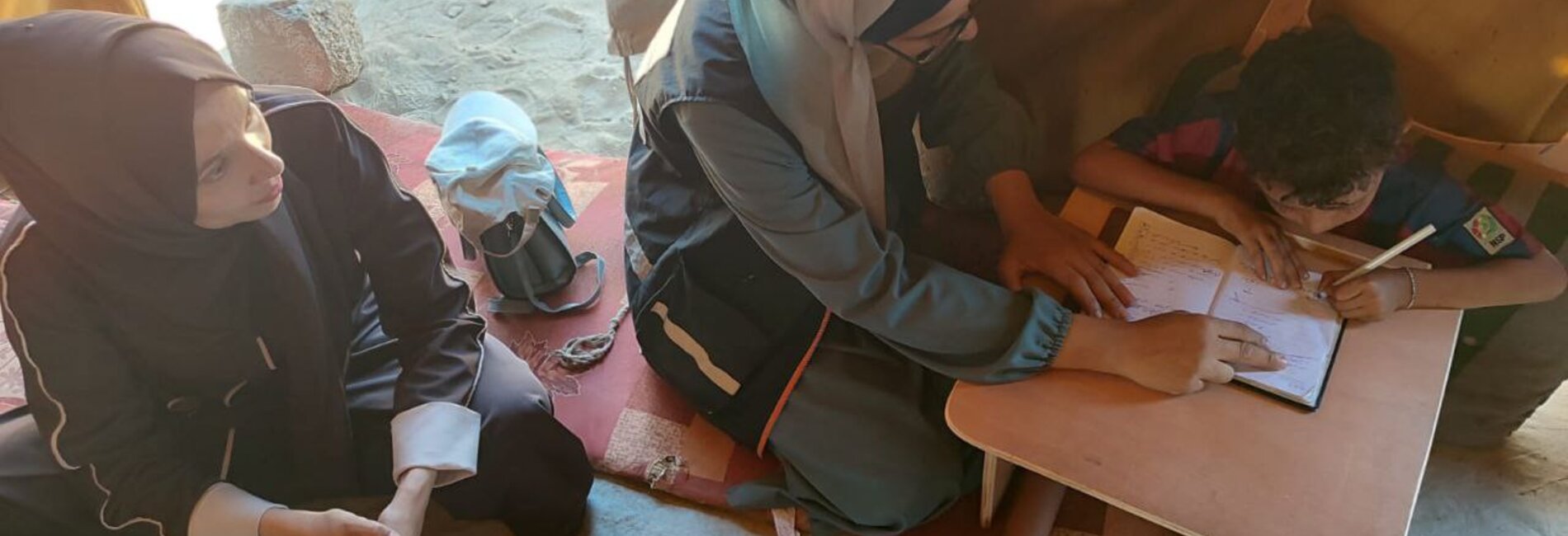Innovating for inclusion: 3D printing and other tailored solutions for children with disabilities in war-torn Gaza
Yazan,* an 11-year-old child from Gaza, has experienced chronic oxygen deprivation since birth due to underlying medical conditions, resulting in impaired speech and cognitive development. Prior to October 2023, when the two-year escalation of hostilities began, he was able to walk independently. However, malnutrition and other war-related complications have since left him reliant on a wheelchair for mobility.
Since October 2023, children in Gaza have faced severe and ongoing difficulties. Schools have been destroyed, families have been displaced, and daily life has been reduced to basic survival. Thousands of children have sustained permanent physical injuries, with many now living with newly acquired disabilities, in addition to those who had pre-existing conditions. For these children, barriers to education and social participation have become significantly more pronounced.
In May 2025, with support from the occupied Palestinian territory Humanitarian Fund (oPt HF), EducAid launched an innovative project to restore children’s access to schooling and social participation within what remained of Gaza’s education system. By that time, over 88 per cent of school buildings across Gaza had been hit or damaged and required either full reconstruction or major rehabilitation. Remaining school facilities were largely used to host the displaced.
Through this initiative, some 1,250 children with disabilities are being supported. This includes wheelchair repairs and fittings as well as the provision of customized 3D-printed grips and components, hearing aids and eyeglasses – interventions that enable safer mobility, improved participation, and a sustained return to learning.
Families across Gaza are mobilizing to donate broken or unused assistive devices. At EducAid’s Fab-Lab and mobile workshop, technicians and young volunteers use 3D printing and recycled scraps to repair damaged equipment and design entirely new components devices and components. These efforts result in low-cost, customized solutions that restore children’s ability to move, play, and return to learning.
The initiative has evolved beyond a technical intervention. It has become a community-driven effort rooted in resilience and creativity, with parents and neighbours contributing resources and support to ensure no child is left behind.
For Yazan, this initiative provided a real lifeline. The workshop team designed a detachable table that could be fitted to his wheelchair, offering a stable surface for writing. To support his grip, a rehabilitation engineer conducted precise measurements of his fingers and produced a customized pen holder using a 3D printer. With guidance from an occupational therapist, Yazan quickly adapted to using the new tool.
“The detachable table and the pen holder have helped my child complete writing tasks and participate in educational activities while seated in his wheelchair and attending school,” his mother said. “This has greatly improved his engagement and strengthened his love for school.”
Yazan’s story is not unique. Eight-year-old Ibrahim, who developed partial paralysis as a result of a war-related injury, was unable to spend long hours in his wheelchair due to swelling in his legs. In response, the project team created a custom slant table that enabled him to read and write comfortably while seated on the ground. With additional counseling and support, he was subsequently enrolled in a temporary learning space operating in a tent within the displacement site where he was staying, giving him the opportunity to resume education.
Aseel, an eight-year-old girl born with a disability and left without her father during the war, previously relied on an unsuitable stroller for mobility. Through the project’s community campaign, a wheelchair was secured, repaired, and adapted to meet her needs. Following basic training, Aseel was able to move independently for the first time. “The wheelchair has changed my daughter’s life,” her mother said. “She can now go to school and participate in activities without relying completely on me.”
These stories illustrate how, despite limited resources, communities in Gaza are developing innovative solutions to support children with disabilities. Through the use of 3D-printed assistive tools, repaired mobility devices, and grassroots mobilization, thousands of children – including Yazan, Ibrahim, and Aseel – are regaining mobility, confidence, and access to education alongside their peers.
* All names have been changed to protect the safety and privacy of the children.










